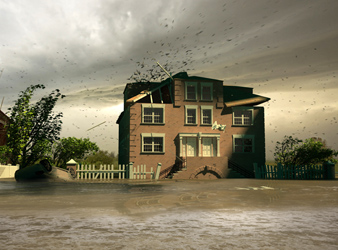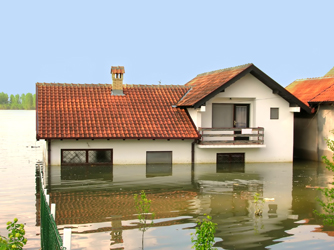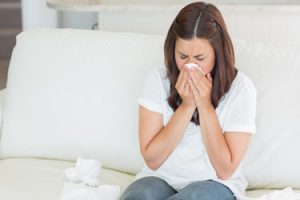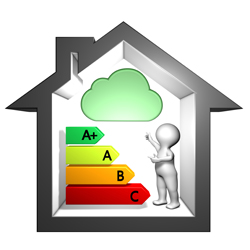
by Eric Brown | Sep 6, 2015 | Health, Indoor Air Quality, Mold Facts, Mold Information, Water Damage Restoration
3 Actions Required To Minimize Flood Damage & Mold
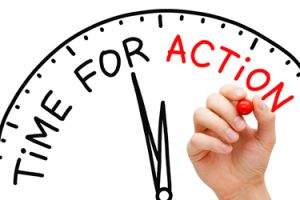
3 Actions Required To Minimize Flood Damage & Mold
All life–plants, animals, and humans–is composed of cells, which require water to function. In fact, cells can not survive without water. The human body, which is made up of 50% to 70% water, and it’s trillions of cells require water to function properly.
Water is a life force, without it we can not survive; but it can also be very destructive causing disease, property damage, and long term health issues.
Mold is a fungus and also has cells, but can not survive without water. Water and moisture is the key ingredient mold needs to grow; unlike a plant which can make its own food using photosynthesis, mold is unable to. The three ingredients mold needs to thrive and grow include the following:
1. A food source, which is material high in cellulose content: paper, wood, drywall, wallpaper, carpet, ceiling tiles, dust, and dirt.
2. The ideal temperature, between 5 degrees and 38 degrees.
3. Of course, as mentioned above, water and moisture. Mold can not proliferate and thrive without water. Hence, the best defense against mold is to minimize moisture.
Mold is everywhere. It has a purpose in our eco-system, ie. to break down dead organic matter from animals and plants. This is the reason that mold is often referred to as “nature’s recycler”. Since mold is everywhere, we are constantly exposed to it and inhale mold spores everyday. If the spore count is relatively low, as it is in the outdoor environment, it does not cause too many health concerns.
In an indoor environment, however, with less ventilation and fresh air, mold will cause problems because the concentration of spores will increase resulting in unhealthy air. In short, mold causes sickness when it grows indoors because the spore count increases as mold reproduces meaning larger concentrations of spores are inhaled.
The other major problem caused by mold relates to structural damage. Like a cancer or parasite, once mold begins to grow it will continue to feed on its host leading to dry rot of the wood, buckling foundations, and other structural damage, like possibly a collapsing roof.
In order to minimize flood damage you need to take immediate action to prevent the onset of mold.
Action Step #1: Water and Electricity Do Not Mix
Safety is the first major concern. If you have flood water entering your home or business, you need to take immediate action to avoid electrical shock. This means you need to remove any extension cords that are under water, turn off the breakers in flooded areas, and most importantly, if you need assistance, call your electrical utility for help.
Action Step #2: Immediate Clean Up Is Essential
Contact Mold B Gone immediately because we are professionals and have the protective gear, equipment, and experience to take action.
Mold needs water to grow so it is absolutely imperative that the clean up process starts right away. Preventing mold growth is accomplished by removing all of the water and then deploying drying equipment, air movers, and dehumidifiers. Once the water is out, and much of the excess moisture is removed, the next step is to remove all of the porous contaminated material such as drywall, wet carpet, etc. and dispose of it. This is particularly important if there is any category 3 water in the home. Once the flooded area is properly gutted and the contaminated material is disposed of, it is important that the area is dry and disinfected before any reconstruction begins.
Sometimes, during a major storm, when many households are affected by flooding, restoration companies can become overwhelmed with calls. While they are waiting, many home owners will begin the clean up process themselves. If you decide to begin the clean up process, we strongly suggest that you use rubber gloves, boots, protective clothing, and a respirator.
Action Step #3: Call Your Insurance Adjuster
Dealing with a flood can be stressful and overwhelming, but rest assured if you implement the first two action steps and then call your insurance adjuster to begin the claim process, everything will be fine. Remember, the whole process of water damage restoration is to restore your home to pre-flood condition.
Call (470)545-4467 or send an e-mail. Mold B Gone has been serving residents of Atlanta since 2009 and have the experience to manage any water damage situation, big or small. Plus, we guarantee all of our service.
Three Steps to Reduce #Flood Damage: A flooded home or business is always a stressful situation. This blog provides you with the 3 steps required to reduce flood damage and most importantly, #mold!
Posted by Mold-B-Gone Remediation, LLC on Sunday, September 6, 2015

by Eric Brown | Sep 4, 2015 | Health, Indoor Air Quality, Mold Facts, Mold Information, Questions and Answers, Water Damage Restoration
Fact #1: The First 24 to 48 Hours Are Critical

Fact #1: The First 24 to 48 Hours Are Critical
If your home is flooded, the first 24 to 48 hours are critical because this is all the time mold and other microorganisms needs to begin growing and thriving.
Five conditions are required by fungi and bacteria to germinate, grow, amplify, and disseminate:
- Organic food source, especially cellulose (e.g., paper, wood), which are found in abundance in construction materials.
- Moisture, even high humidity (67% RH plus)
- Moderate temperature – 68-86°F/20-30°C
- Stagnant air
- Time – several hours to several days.
Water damage restoration has two main goals. First, to restore the home to pre-loss condition. Second, to prevent the onset of mold and other microorganisms.
In order to accomplish these goals, you need to take action immediately. These are the action steps.
- Contact a restoration contractor immediately to begin the removal of excess water. Once the excess water is removed, the restoration contractor can deploy drying equipment, dehumidifiers, and air movers, which will be effective at preventing mold growth.
- Contact your insurance company to begin the claims process.
Fact #2: Mold Growth Is Not The Only Concern

Fact #2: Mold Growth Is Not The Only Concern
The other reason time is not on your side relates to the bio-hazard level of the water. There are three hazard levels.
Category 1 Water, also known as clean water, is not considered hazardous because it originated directly from a sanitary source such as a broker water supply line, melting ice or snow, rain water, and/or uncontaminated tub or sink water.
Category 2 Water, also known as gray water, is a health concern because the water originated from a contaminated source such as discharge from dishwashers or washing machines, toilet bowl overflows (urine, no feces), seepage due to hydrostatic pressure, and sump pump failures. Gray water has bacteria present that carries nutrients for microorgnisms that cause sickness and discomfort when consumed.
Category 3 Water, also known as black water, is the worst level of water contamination because the water originated from sewage, rising flood water from rivers and streams, and ground surface water flowing horizontally into the home. Black water can cause death and sickness because it can be contaminated with E. Coli; Acanthamoeba; Salmonella; Helicobacter pylori; Leptospira; Cryptosporidium; Giardia; Hepatitis A Virus; Clostridium Tetani; and Adenoviridae. Illnesses caused by black water include gastroenteritis; Weil’s disease also known as Leptospirosis; Hepatitis; acute respiratory illnesses; and tetanus.
The problem with standing flood water is that the risk of bio-hazard increases as time passes. In short, after two to three days, clean water can turn to gray water, and eventually black water as bacteria and pathogens begin to grow and proliferate.
Fact #3: Water Damage Restoration Should Be Done By Professionals

Fact #3: Water Damage Restoration Should Be Done By Professionals
The immediate inclination of most property home owners is to begin the clean up process themselves and if you do, please take precautions because micro-organisms enter the body through direct contact or by breathing in contaminants. For this reason, always wear protective clothing, rubber boots, gloves, eye, and respiratory protection.
In order to avoid long term health, structural, and mold concerns, we recommend the services of a professional restoration company that has the experience and training to restore your home to pre-loss condition.
Well trained professionals understand that not all water damage restoration projects are the same. When they are formulating their action plan also known as a scope of work, they will assess the hazard level of the water, but will also determine the extent of destruction to create a sensible plan of action.
There are four distinct classes of destruction:
- Class 1 Destruction: The lowest and easiest to deal with, this has a slow evaporation rate. Only part of a room or area was affected, there is little or no wet carpet, and the moisture has only affected materials with a low permeance rate, such as plywood or concrete.
- Class 2 Destruction: With a fast evaporation rate, this level affects an entire room, carpeting, or cushioning, the wetness has wicked up the walls at least 12”, and there is moisture remaining in structural materials.
- Class 3 Destruction: This class has the fastest evaporation rate, and ceilings, walls, insulation, carpet and sub-floors are all saturated. The liquid may have come from overhead.
- Class 4 Destruction: This class is labeled as a specialty drying situations, which means there has been enough liquid and time to saturate materials with very low permeance, such as hardwood, brick, or stone.
Other reasons you should hire a professional include the following:
- Trained professionals have specialized equipment to pump out excess water, commercial grade dehumidifiers and air movers.
- Experienced professionals have the knowledge to properly determine the class of destruction and category of water to put together a scope of work (ie. plan of action).
- Ability to assess structural issues caused by the water damage, which could have long term safety and property value consequences if not fixed properly.
- Advise you on what contents can be cleaned and what needs to be thrown out.
- Create a drying and monitoring strategy using air movers and dehumidifiers.
- Create a sanitizing plan to ensure a healthy living environment.
As a final note, in addition to using the services of a professional restoration company, we also recommend that you hire a third party environmental firm to perform post-remediation verification tests on the air quality to assess the mold spore count and sewage contamination tests if the flood water had category 3 water. These tests should be performed before any reconstruction occurs because it will provide you with verification that the water damage restoration was done properly. There is a cost to post-remediation verification, but it is well worth the investment for peace of mind that the work was done properly. Long term, this final step could save you thousands of dollars and future headaches because if any moisture or bacteria is present after the rebuild is complete, much of the reconstruction will eventually need to be torn down, particularly if there is mold.
Questions? We are here to help. Call us, 678-697-6267 or send us an e-mail.

by Eric Brown | Aug 30, 2015 | Health, Indoor Air Quality, Mold Facts, Mold Information, Mold Inspection, Mold Remediation, Mold Removal, Questions and Answers
Are You Mold Sensitized?

Are You Mold Sensitized?
In March of this year, Wonder Makers Environmental, based in Michigan, launched www.moldsensitized.com with the goal of educating consumers, contractors, and health professionals on the health concerns caused by mold. The website’s goal is to be the ultimate resource of mold information and contains many articles written by the CEO, Michael Pinto.
Since launching the website, many mold sensitized individuals have been interviewed. Five key lessons can be learned from these interviews.
- There is a lack of appreciation in the medical community of the impact mold can have on certain individuals.
- Symptoms from mold sickness are broad, leading to multiple mis-diagnosis of patients by many doctors.
- Mold sensitized individuals seek help from multiple medical practitioners because their illnesses continue.
- The mold sensitized individual eventually learns that mold has been the cause of their sickness.
- Because traditional remediation approaches do not adequately address their sensitivities, mold sensitized individuals often are forced to seek alternative shelters.
According to experts featured on the MOLDY documentary, 28 percent of the population have genes that make them highly susceptible to mold-related illness. Putting this into perspective, and based on the population of the metro Atlanta area, there are approximately 1.5 residents susceptible to mold sickness.
According to Dr. Richie Shoemaker, a physician and expert in the field of biotoxin-related illness and author of the book Surviving Mold, the most common condition associated with mold illness is Chronic Inflammatory Syndrome.
What Is Chronic Inflammatory Syndrome?
Chronic Inflammatory Response Syndrome (CIRS), also known as Sick Building Syndrome (SBS), is a combination of illnesses or aliments that are in direct relation with an individual’s place of work or home environment:
An acute and chronic, systemic inflammatory response syndrome acquired following exposure to the interior environment of a water-damaged building with resident toxigenic organisms, including, but not limited to fungi, bacteria, actinomycetes and mycobacteria as well as inflammagens such as endotoxins, beta glucans, hemolysins, proteinases, mannans, c-type lectins and possibly spirocyclic drimanes, plus volatile ogranic compounds.
The term Sick Building Syndrome was first coined by the World Health Organization in the 1980s and it is believed that it is caused by poor air quality caused by water damage.
According to Shoemaker:
This illness happens after exposure to the interior environment of a Water-Damaged Building (WDB). There are many ways buildings become home to a toxic mix of microbes, fragments of microbes, and harmful chemicals. Buildings can host fungi, bacteria, mycobacteria, and actinomycetes as a result of construction defects like inappropriate ventilation; faulty construction of crawl spaces or inadequate building design; flat roofs or fake stucco cladding without adequate caulking; incomplete basements exposed to saturated ground water conditions; or not correcting water leaks.
According to Shoemaker, 25% of the population has a genetic pre-disposition to CIRS; women tend to report more symptoms than men:
Genes made them prime targets for an assault by their own innate immune systems….exposure to the interior environment of a Water-Damaged Building (WDB), [causes] an innate immune response that is going haywire.
Individuals exposed to the toxins in a water damaged building suffer from chronic illness because their bodies are trying to eliminate the foreign substances that stay in the body resulting in chronic inflammation and multiple symptoms. In fact, one of the reasons that it is so difficult to diagnose CIRS is due to the fact that there are 37 symptoms: fatigue; weakness; aches; muscle cramps; unusual pain; ice pick pain; headache; light sensitivity; red eyes; blurred vision; tearing; sinus problems; cough; shortness of breath; abdominal pain; diarrhea; joint pain; morning stiffness; memory issues; focus/concentration issues; word recollection issues; decreased learning of new knowledge; confusion; disorientation; skin sensitivity; mood swings; appetite swings; sweats (especially night sweats); temperature regulation or dysregulation problems; excessive thirst; increased urination; static shocks; numbness; tingling; vertigo; metallic taste; and tremors.
Because of the large number of symptoms and different combinations that a patient can have, CIRS is difficult to diagnose.
If you have been suffering from ill-health for an extended period of time and the treatments that you are prescribed do not seem to help, then here are some recommended action steps.
- Listen to your body. If you are feeling sick and despite under-going multiple treatments still continue to feel sick, then do not give up on trying to find out what the cause is.
- Research mold sickness. The website, www.moldsensitized.com, has a significant amount of information on mold and it’s impact on health and is constantly updating the site with new information on its blog. In particular, you may want to read these articles: Medical Evidence that Connects Mold Exposure to Illness Keeps Piling Up;
Do People Really Get Sick From a Little Mold in Their House?;
What is Stachybotrys Mold?;
The Mystery of Mycotoxins in Mold Contamination;
The WHO on Mold;
TOP 10 Questions and Answers About Water-Damaged Buildings;
- Review the experiences of mold survivors to gain greater insight into mold sickness. One of the primary reasons you want to do this is so that you will have some further evidence that you can take to your preferred medical practitioner.
- Continue to educate yourself. Because of the lack of knowledge in the mainstream medical community, you need to take a lead role in determining whether mold is making you sick.
- Finally, if after all your research, you think that mold is the problem, then verify the existence of mold in your home by investing in a mold inspection and air quality test.
What Should I Do If I Am Diagnosed With Mold Sickness?
If you suspect that you are sick because of mold, then the next step is to find a Doctor that has knowledge about mold sickness. To find listings of environmental doctors throughout the world, click here.
Two Steps To Recovery!
Once you are diagnosed, there are two distinct steps to your recovery.
Seek Medical Treatment
Medical treatment is designed to detox your body and allow your immune system to recover and begin to regain its strength. The detox strategy will be prescribed by your physician who will likely recommend that you remove yourself from the property that has been making you sick until it is safe to occupy again.
Remediate Your Home
The process of removing mold from your home and ensuring that you can move back in without experiencing further sickness is the long term solution to health recovery.
In the past, mold sensitized individuals were forced to abandon their primary residences even after remediation because contractors did not understand the Big Picture of how the remediation and cleaning activities have to be coordinated with the medical and building maintenance aspects of the project.
If you want to invest into mold remediation, we recommend that you hire a contractor that has invested in the remediation for sensitized individuals training. Our team are currently the only mold remediation company in Atlanta that have graduated from this course. We work closely with the other graduate, Healthy Air, for all for all of our pre-testing and post testing on all homes and businesses we perform remediation work on. In addition, Mold B Gone specializes in whole house and room sanitizing to reduce the amount of bacteria and pathogens in your home allowing you to breath easier and healthier.
Mold B Gone offers mold sensitized individuals these five key benefits:
- Commitment to completing the job correctly the first time, with the understanding that our goal is provide you with a safe place to live or work because our team knows that our work practices can impact your health.
- Clear understanding that the environmental portion of projects with sensitized individuals has many facets (i.e., source removal, content cleaning, HVAC decontamination, whole structure cleaning, building performance improvements, etc.) and will provide services only in those areas where they are qualified.
- Clear understanding that your project requires procedures that are more protective than the current standard of care for the mold remediation industry.
- Commitment to specific project endpoints that have been designed for sensitized individuals (endpoints that incorporate the latest health/science data).
- Long term cost savings, peace of mind, and less anxiety because we will be familiar with situations like yours and the most effective techniques for this stringent remediation.
Mold B Gone is here to help and committed to serving mold sensitized individuals. If you suspect that mold is making you sick, call us, 678-697-6267 or contact us via e-mail for further assistance. Our goal is to help you live a healthier and happy life. Most importantly, we truly empathize with your situation and are committed to helping you and guarantee our services.
How Do I Know If Mold Is #Making Me Sick? Wondering if you are sensitive to mold? This article explains how to determine if you are mold sensitized, seeking treatment, and the next two steps to health!
Posted by Mold-B-Gone Remediation, LLC on Sunday, August 30, 2015

by Eric Brown | Aug 28, 2015 | Health, Indoor Air Quality, Mold Facts, Mold Information, Questions and Answers
Why Should I Have An Indoor Air Quality Test?

Why Should I Have An Indoor Air Quality Test?
Most people are unaware that their indoor air could be polluted. Indeed, today, we spend 90% of our time indoors, relying on our HVAC systems to create a constant stream of healthy air. Our health is dependent on the the quality of the air we breathe. The problem with indoor air pollution is that is not visible to the naked eye, meaning the quality of your air could be making you sick without you even knowing it. Despite your efforts to maintain a clean and healthy household, you still may be getting sick because of indoor pollutants.
Symptoms of Poor Indoor Air Quality
Our bodies are designed to rid ourselves of toxins and pollutants, this is one of the reasons that we get sick and experience colds and flus. However, if you or other’s in your family seem to always be sick, the air you are breathing could be the cause.
Do you often experience the following health issues?
- Headaches;
- Respiratory issues such as asthma, sinusitis, and other respiratory infections such as bronchitis and pneumonia;
- Excessive coughing and/or a breathless feeling;
- Dizziness, confusion, malaise, trouble concentrating, and other cognitive disorders;
- Skin irritation, itchiness, and rashes;
- Ear and/or eye infections
If you consistently experience these symptoms, the air you are breathing could be the cause.
A simple test is to record how you feel when you are away from your home or business. If you feel sick when you are in your home or business, but feel much better when you are away, then this could be a clue that the air is making you sick.
What Causes Poor Indoor Air Quality?
Contaminated air can seep in from the outside or could be caused by indoor sources like construction materials, consumer products, mold, insects, and pets. The effect of pollutants is compounded by poor ventilation which allows pollutants to accumulate to unhealthy levels.
Poor indoor air quality in your home or business could also be caused by factors such as the building design, heating/cooling design, and/or previous water damage.
Other potential causes of poor indoor air quality include the following:
- High humidity levels.
- Airborne dust problems from poorly maintained ducts or other sources in the building.
- Volatile Organic Compounds (VOC’s) which are chemicals released by building materials and furniture.
- Inadequate ventilation caused by mechanical or building issues.
- Combustion problems leading to high levels of Carbon Monoxide (CO) or Carbon Dioxide (CO2).
- Sewer gas leakages, leading to odors.
- Recurring water damage, causing growth of mold and other bacteria.
- Radon, the second highest cause of lung cancer, most likely seeping through the foundation in your basement.
- Radioactive marble or granite in the home.
- Air borne asbestos, a cause of mesothelioma.
What Should I Do?
The easiest way to determine if the air you are breathing is making you sick is to call an indoor air quality specialist to test the air. Indoor air quality professionals have specialized equipment that can test the air for radon, mold spores, and other pollutants.
At Mold B Gone, our Indoor Air Quality testing uses OSHA, NIOSH, and EPA testing procedures to investigate indoor air quality complaints. We can test for 100s of compounds, including gases, chemicals, dust, and biological samples to give you a profile of your air.
One of the services we specialize in is mold testing, which is done by taking air samples from both inside and outside the building so the spore numbers can be compared with each other. If the testing shows high mold spore counts, then a mold inspection and mold removal plan will be provided to you.
In order to ensure the most accurate and reliable results, Mold B Gone utilizes specialized calibration instruments and sample handling procedures. In addition, controlled samples are compared with yours to ensure the most accurate results possible. We use Third Party Labs to analyze the results of all of the samples we take to provide you with a detailed air quality report and recommendations.
If you are concerned that you may have indoor air quality issues and have questions, call 678-697-6267 or send us an e-mail.
What Is Indoor Air Quality Testing? If you or someone in your family suffers more frequently from colds or flus and you are not sure why, the cause could be poor indoor air quality. Learn more!
Posted by Mold-B-Gone Remediation, LLC on Friday, August 28, 2015

by Eric Brown | Aug 21, 2015 | Health, Indoor Air Quality, Mold Facts, Mold Information, Mold Inspection, Mold Remediation, Mold Removal, Mold Removal Cost, Questions and Answers
How Much Does Mold Remediation Cost?

How Much Does Mold Remediation Cost
Finding mold in your home is disconcerting because you are concerned about the potential health impact on you and your family.
The purpose of this article is to answer the following three questions for Atlanta residents that need mold removal:
1. What steps does a mold inspector take to determine if a mold problem exists?
2. What questions should I ask to ensure that I am working with a reputable mold removal professional?
3. What criteria does the professional use to determine the final mold removal cost?
What steps does a mold inspector take to determine if a mold problem exists?
The three steps a mold inspector will take to determine if a mold problem exists include the following:
Step #1: Identify The Root Cause of the Problem
The root cause of mold is moisture. With this in mind, during the inspection process, the inspector will ask many questions to try to learn more about past and existent moisture problems. You will be asked about past moisture problems that could be caused by flooding, leaks, excessive humidity, etc. The inspector will also check the levels of humidity and moisture levels using moisture detection equipment.
Once this step is complete and if the inspector is positive that there are moisture issues, the next step is to…
Step #2: Find Out If Moisture Problems Are Still Present
The mission of all mold inspectors is to find the moisture problems and then determine what needs to be done for this to be fixed. Indeed, there is no point in removing mold or addressing a mold concern unless the underlying cause is first fixed. For instance, if you have a leaky roof, pipes, seepage, and/or high humidity levels, these problems need to be fixed first because moisture is what mold needs to thrive.
Determining the source of moisture can be a challenge if the home has mold, but no history of flooding and no clear evidence of moisture issues like visual water stains. In cases like this and if it is clear that there is mold, the inspector may recommend that a specialist in Thermal Imaging be consulted to determine if there are hidden leaks. Thermal imaging helps identify hot and cold spots that can pinpoint areas where there could be hidden leaks or moisture intrusion.
The final step a mold inspector must address is to…
Step #3: Determine The Type of Mold
The core purpose of this step is to find out what type of mold you have.
This can also be a challenge if there is no visual mold present but there is a mildewy or urine like smell indicating that there is mold somewhere, perhaps hidden behind walls. In instances like this, the mold inspector may recommend an air quality test to measure the spore count inside of the home and outside of the home.
If there are places where mold hides in your home, then tape or swab samples will be taken.
Once the samples are collected, they should be sent to a Third Party Lab to determine the type of mold present.
These results will be provided to you along with an explanation of the type of mold, spore count, and potential health consequences that the present mold species will have.
After your initial investment into the mold inspection and air quality tests (if applicable) and it is verified that you have a mold problem, then you need to determine which mold removal company you will work with.
What questions ensure I am working with a reputable mold removal professional?
If you search for Atlanta mold removal companies on Google, you will find many businesses that offer mold removal services. But who can you trust?
An on-going concern in our industry relates to the lack of licensing and regulation. Because of this, any contractor who wants to profit from mold removal can offer the service even if they lack experience and training. As a consumer, you need to be aware of this and the best defense is due diligence.
If you have a mold problem that needs to be remediated, then you should get estimates from a minimum of three qualified contractors, and check to see what their BBB rating is. In addition, qualify the contractor, by asking these questions:
1. Does the mold removal contractor offer a written contract/change order?
2. Does the mold removal contractor offer a remediation plan?
3. Does the mold removal contractor offer a post-remediation report?
4. Does the mold removal contractor provide recommendations of independent indoor environmental professionals that can provide you with a post-remediation verification report, to verify the success of the work?
5. Does the mold removal contractor have proof of insurance?
6. Does the mold removal contractor’s employees have training through recognized and reputable organizations?
7. Does the mold removal contractor set up containment to prevent cross contamination?
8. Does the mold removal contractor use negative air machines and air scrubbers to clean the air?
9. Does the mold removal contractor give you a list of referrals and their contact details?
10. Does the mold removal contractor use DOP (Dispersed Oil Particulate) tested equipment which is a process that tests the integrity of the HEPA (High Efficiency Particulate Air) filters used?
You should get YES answers to all of these questions and if you don’t, interview other contractors.
Another key question you need to ask relates to the guarantee a mold remediation contractor offers on their work. Are they willing to offer you a guarantee?
Once you have found three contractors that have passed your due diligence testing and you know that you are willing to hire one of them, then the next step is to request the following documents from each of them:
1. Itemized mold removal estimate.
2. Mold removal plan of action, also referred to as a scope of work.
3. An authorization to proceed (ATP), which is the service contract.
Itemized Mold Removal Estimate
The estimate details exactly what you are paying for. A professional estimate will outline what you are paying for and will usually provide you with pricing for the following: equipment; garbage removal; materials and consumables; mold removal labor; documentation; equipment decontamination; management charges; etc. This type of break down provides you with information that you can compare with other quotes you receive.
Be wary of estimates that provide no detail and just a dollar figure. This is a concern for two reasons. First, you do not know exactly what you are paying for. Second, it is difficult to compare simple quotes with detailed quotes, making it more difficult to make informed decisions.
Bottom line, don’t be afraid to ask for line by line details so that you know exactly what is involved in the mold removal cost.
Mold Removal Plan Of Action
The Scope of Work provides you with a detailed work plan of what exactly will be done to remove the mold and restore the fungal ecology of your home to healthy levels. Contractors unwilling to provide such a plan should be avoided. If you do not get a written plan, then how do you know if the work was done properly and effectively?
Authorization To Proceed
Thoroughly review the ATP before signing and allowing the work to begin so you are clear on the terms of the service.
What criteria does the professional use to determine the final mold removal cost?
Ultimately, the final removal cost estimate will be determined by three key criteria:
1. How much of the area is infected with mold?
2. What kind of materials are infected?
3. How easy is it to access the mold?
Answers to the above questions will enable the contractor to provide you with an estimate. Typical household mold removal projects will range from $2,000 to $6,000 depending on the answers to the questions above. It should be noted, however, that there is no set rule for mold removal cost because it tends to be situation and market specific. Because of this, the cost can range from a low of $500 up to $30,000, which is a significant variance.
Since there is no easy answer to the “Mold Removal Cost” question it is imperative that you, the consumer, invest time in due diligence, ask prospective contractors questions, check references, and thoroughly review the documentation that you receive.
There is no easy answer to this question because every situation is different and this is the reason we specifically advise that you compare quotes from at least three companies.
Most importantly, think long term and choose the company that you think will do the best job, even if their price is higher. Reputable mold remediation professionals may cost more, but ultimately, you get what you are paying for and the long term benefits of getting the job done right the first time will save you from future costs and headaches.
Mold B Gone offers a guarantee on our services. If you have a mold concern and have questions, please call us, (470) 545-4467, or send us an e-mail.
How Is #Mold Removal Cost Determined?: Have a mold concern, wondering what it will cost to remove? This article provides you with a detailed explanation of how mold removal cost is determined!
Posted by Mold-B-Gone Remediation, LLC on Friday, August 21, 2015

by Eric Brown | Aug 14, 2015 | Health, Mold Facts, Mold Information, Mold Inspection
What Happens During A Mold Inspection?

What Happens During A Mold Inspection?
Our previous article explained how you can determine if you have mold and what you should and should not do if you discover mold.
One of the key recommendations was to call a professional to do a thorough inspection.
The purpose of this article is to explain what the inspector does when they visit your home or business.
Mold Inspectors Have Two Key Goals
The primary goal of a mold inspector is to first determine what is causing the mold. That is, they want to figure out what the source of moisture is that is causing the mold.
The second goal is to determine the extent of contamination and what type of mold is present so that a proper removal and remediation plan can be put into place.
Like a detective looking for clues, during the mold inspection, the inspector will gather information about the property by taking four actions:
1. Visual Clues
2. Asking Questions
3. Measuring Moisture Levels
4. Sampling Suspect Mold
#1 Visual Clues
Prior to entering the home or building, the inspector will examine the landscaping and determine if seepage could be a potential problem by examining the drainage system to determine if water flows away or towards the property.
The inspector will also look at the facia, eaves, and drain spouts to determine if there are any potential areas where water could be entering the property.
The whole purpose is to rule out any external sources of moisture intrusion.
Once this is complete, the inspector will look for visual clues of moisture inside of the property, including water stains, under sinks, behind appliances, behind baseboards, window condensation, etc.
#2 Asking Questions
The inspector will likely ask many questions to gather information about the building history, health of occupants, and potential moisture events that could be causing mold.
- Does anyone have any negative health affects when in the building yet feel better when not in the building? Important to know because if occupants are suffering ill health, this could indicate that there are indoor air quality issues potentially caused by mold.
- What year was the property built? This question gives the inspector some idea of how old the the structure is and potential aging concerns that could lead to moisture issues.
- How long have you owned and or lived, worked in or been renting the house or building? If you have experienced ill health, the length of time in the building could give clues as to the extent of the air quality issues.
- Does the house have a sump pit and pump? Many homes have sump pits and pumps to prevent flooding, but it is important that they are functioning properly.
- Ever had any leaks such as dishwashers, water heaters etc? If the answer is yes, then this could provide further clues as to where the potential moisture issues originated from that caused the mold issues.
- Previous floods or sewer backups such as toilet overflows? Again, if the answer is yes, strong clue of the potential cause of mold concerns.
- Do the windows leak or sweat? If the windows leak or sweat this could indicate that there are moisture issues in the home causing mold.
- Are the windows original? If the windows were recently replaced and not installed properly, this could cause moisture issues leading to mold.
- What year was the roof last shingled? One of the most common causes of moisture in homes, is leaky roofs. If the home is older and the roof has not been inspected, this could be a potential source of the mold problem.
- Is the furnace high efficiency and is there a HRV heat recovery ventilation system in place? The HVAC system of the home is the lungs of the home. If it is not operating properly, the air quality could be poor.
- Do the bathrooms have exhaust fans? Bathrooms create significant amounts of moisture in the home. If there are no exhaust fans, this could be a significant source of moisture potentially leading to mold issues.
- Are the fans vented to the outside environment or just into the attic? Fans vented into attics is a common construction flaw that leads to mold problems in properties.
- Is the dryer vented outside? Dryers should be vented outside, if not, this will create significant moisture issues.
- Have any upgrades to the exterior been done within the past ten years? Important question because the potential moisture problems could have been caused by poor construction practices during the upgrade.
- Major upgrades to the interior? This is another important question because sometimes during interior renovations mold is discovered but not properly cleaned up and can result in cross-contamination throughout the home.
Answers to these questions will help the inspector assess how and where the potential moisture concerns are originating from. It is important to understand that any mold remediation that occurs should only begin once the underlying moisture problems are fixed.
#3 Measuring Moisture Levels
High humidity is one of the strongest indications that there are moisture problems in the property. During a mold inspection the inspector will note down the relative humidity and temperature of each room. If there are specific rooms that have higher levels of relative humidity, this could be a clue that there is a mold problem in the room.
#4 Sampling Suspect Mold
The last step is to try to figure out what type of mold is present. The sampling strategy of the inspector could involve taking actual swab or tape samples. Some inspectors may also recommend that an air quality test be done as well to measure the spore count in the home compared to the outside air. The samples from such tests should be sent to an independent third party lab for examination.
As a final note, it should be noted that a home could have moisture issues that are not found through a visual inspection. This is one of the challenges that most mold inspectors face because mold can be hidden and sources of moisture can be hidden as well. A perfect example is if the property has leaky pipes, creating moisture and mold. If, during the questioning process, the inspector suspects that the problem could be leaky pipes, they may recommend that a thermal imaging test be done to examine the hot and cold spots in the home which will help pinpoint the area where the leak is taking place.
A credible mold inspector will take a proper amount of time to determine if there are mold concerns and then recommend a proper course of action. If you have your home inspected and it takes less than 15 minutes and you are told it will cost tens of thousands of dollars to fix, then definitely get a second opinion.
Our next article will explain how mold remediation pricing is determined.
Questions? We are here to help and guarantee our services. Call 678-697-6267 or send us an e-mail.
